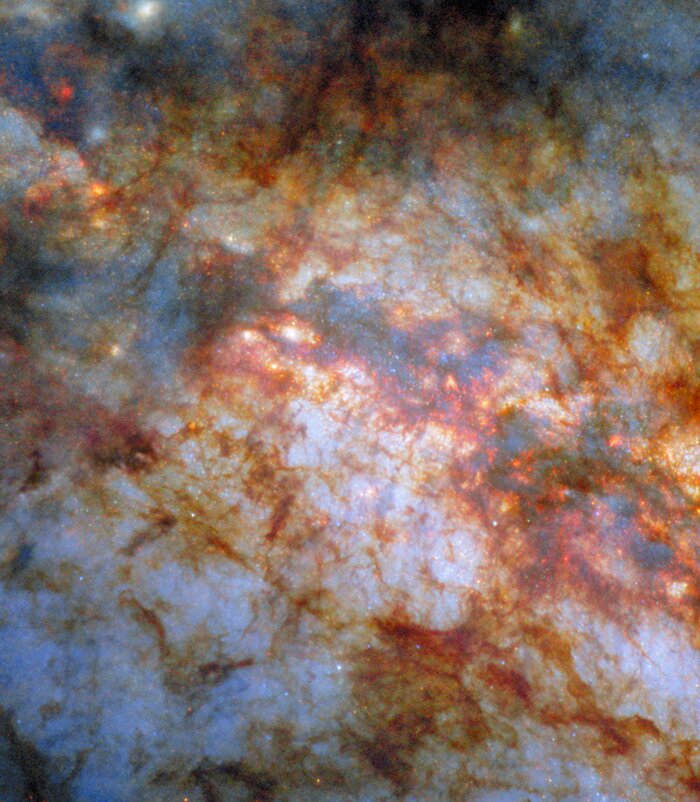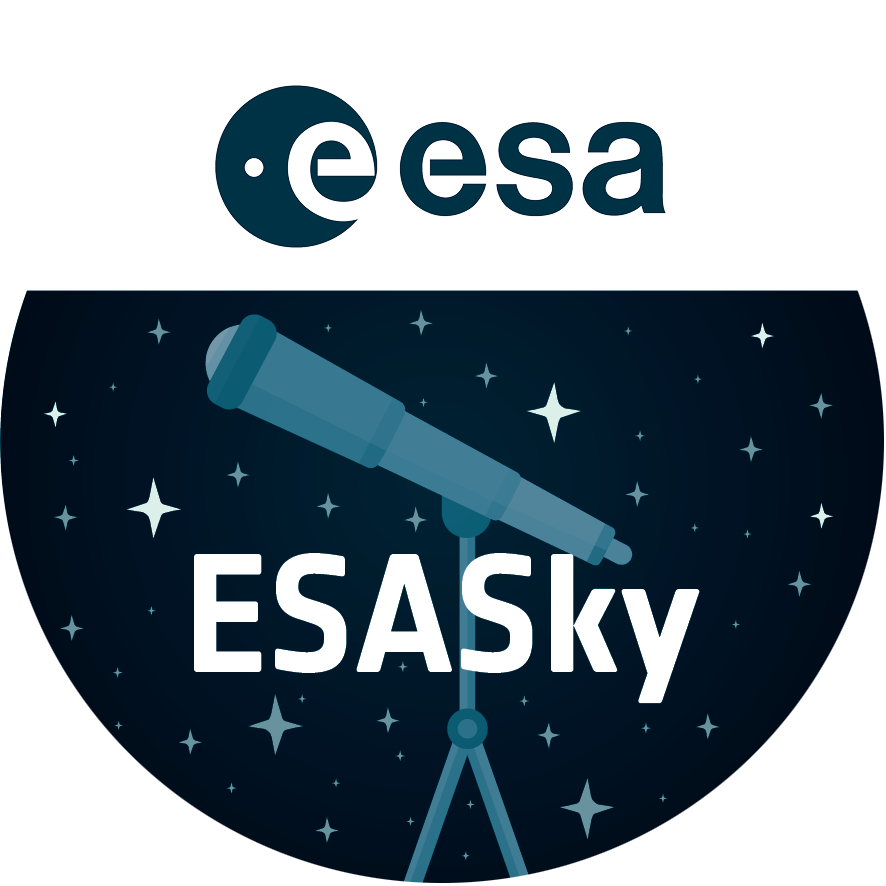The smouldering heart of a celestial cigar
What lurks behind the dense, dusty clouds of this galactic neighbour? There lies the star-powered heart of the galaxy Messier 82 (M82), also known as the Cigar Galaxy. Located just 12 million light-years away in the constellation Ursa Major (The Great Bear), the Cigar Galaxy is considered a nearby galaxy. As this NASA/ESA Hubble Space Telescope Picture of the Week shows in great detail, it’s home to brilliant stars whose light is shaded by sculptural clouds, clumps and streaks of dust and gas.
It’s no surprise that the Cigar Galaxy is so packed with stars, obscured though they might be by the distinctive clouds pictured here. Forming stars 10 times faster than the Milky Way, the Cigar Galaxy is what astronomers call a starburst galaxy. The intense starburst period that grips this galaxy has given rise to super star clusters in the galaxy’s heart. Each of these super star clusters contains hundreds of thousands of stars and is more luminous than a typical star cluster. Researchers used Hubble to home in on these massive clusters and reveal how they form and evolve.
Hubble’s views of the Cigar Galaxy have been featured before, both as a previous Picture of the Week in 2012 and as an image released in celebration of Hubble’s 16th birthday. The NASA/ESA/CSA James Webb Space Telescope has also turned toward the Cigar Galaxy, producing infrared images in 2024 and earlier this year.
This image features something not seen in previously released Hubble images of the galaxy: data from the High Resolution Channel of the Advanced Camera for Surveys (ACS). The High Resolution Channel is one of three sub-instruments of ACS, which was installed in 2002. In five years of operation, the High Resolution Channel returned fantastically detailed observations of crowded, starry environments like the centres of starburst galaxies. An electronics fault in 2007 unfortunately left the High Resolution Channel disabled.
[Image Description: A close-in view of the centre of galaxy M82. Bright, bluish light radiating from the centre is due to stars actively forming there. A thick lane of gas, black in the centre and red around the edges, crosses the centre and blocks much of the light. Thinner strands and clumps of reddish dust cover much of the rest of the view.]
Links
Credit:ESA/Hubble & NASA, W. D. Vacca
About the Image
| Id: | potw2537a |
|---|---|
| Type: | Observation |
| Release date: | 15 September 2025, 06:00 |
| Size: | 1914 x 2194 px |
About the Object
| Name: | M82 |
|---|---|
| Distance: | 12 million light years |
| Constellation: | Ursa Major |
| Category: | Galaxies |
Classic Wallpapers
Coordinates
| Position (RA): | 9 55 53.13 |
|---|---|
| Position (Dec): | 69° 40' 48.94" |
| Field of view: | 0.40 x 0.46 arcminutes |
| Orientation: | North is 4.8° right of vertical |
Colours & filters
| Band | Wavelength | Telescope |
|---|---|---|
| Optical U | 330 nm |
Hubble Space Telescope
ACS |
| Optical B | 435 nm |
Hubble Space Telescope
ACS |
| Optical y | 550 nm |
Hubble Space Telescope
ACS |
| Optical I | 814 nm |
Hubble Space Telescope
ACS |


